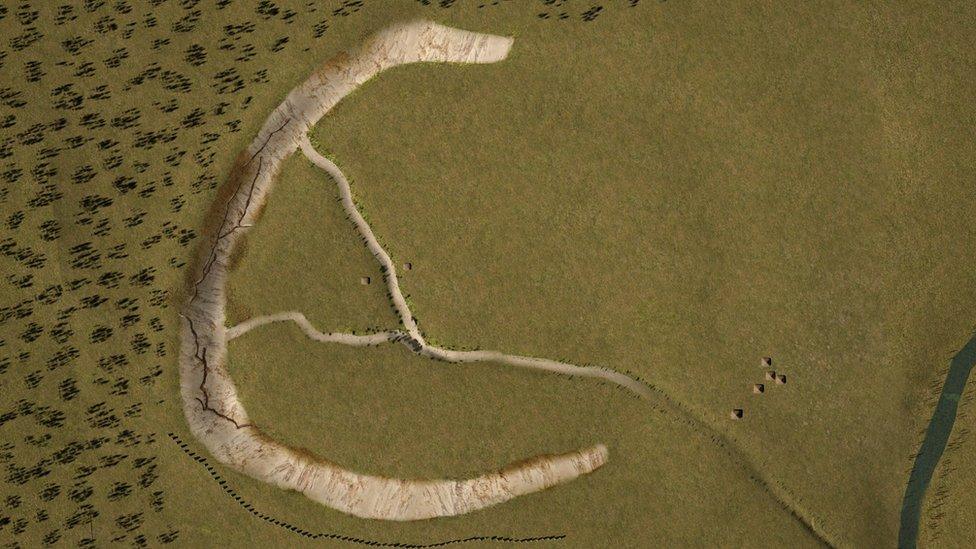Stonehenge: Mystery of where site's sarsen stones come from has been solved
- Published
- comments
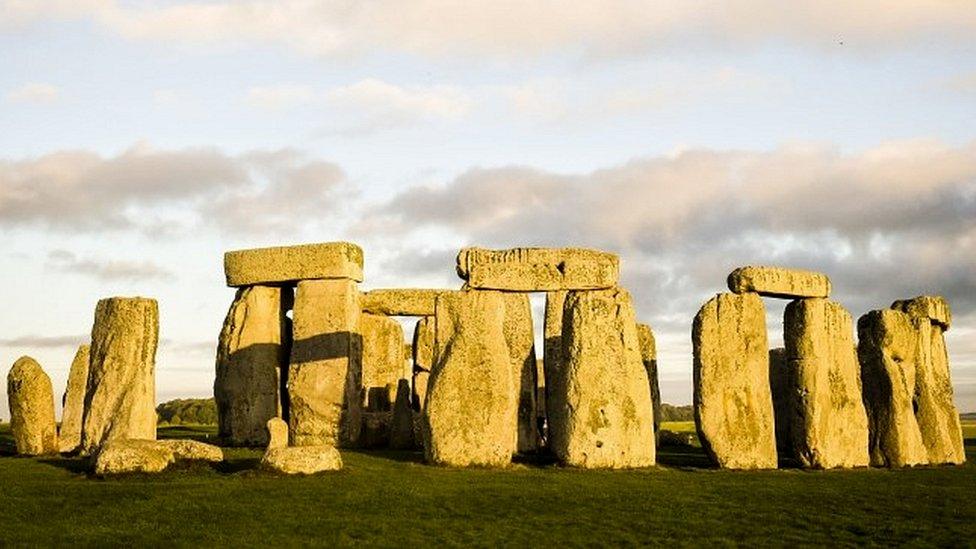
The origin of the standing sarsens at Stonehenge had been impossible to identify until now
The mysterious origins of the giant sarsen stones at Stonehenge has finally been discovered.
The breakthrough came after tests were carried out on a metre-long missing piece of the site, which was returned after 60 years.
Archaeologists pinpointed the source of the stones to an area 15 miles (25km) north of the site near Marlborough in Wiltshire, England.
English Heritage's Susan Greaney said the discovery was "a real thrill".
WATCH: What is the story behind Stonehenge?
"To be able to pinpoint the area that Stonehenge's builders used to source their materials around 2,500 BC is a real thrill," Ms Greaney added.
"They wanted the biggest, most substantial stones they could find and it made sense to get them from as nearby as possible."
The seven-metre tall sarsens - which is a type of sandstone block - form the majority of Stonehenge's structure. They weigh about 20 tonnes.
The monument's smaller bluestones have been traced to the Preseli Hills in Wales, but the sarsens had been impossible to identify until now.

The stone samples were removed during archaeological work in 1958
Scientists had long been looking for the missing core, which was removed during work to strengthen one of the stones with metal rods in 1958.
No-one knew where it was until 89-year-old Robert Phillips, who was involved in those works, decided to return part of it last year.
The return of the core allowed archaeologists to break it down and analyse what it was made up of.
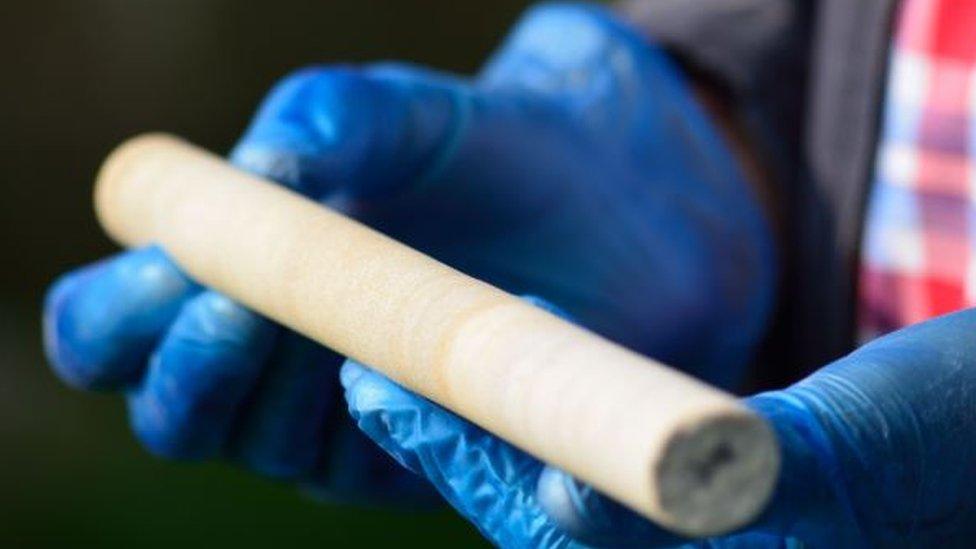
Archaeologists analysed the composition of the core to pinpoint where the ancient Sarsen stones came from
English Heritage said the opportunity to do these tests proved "decisive", as it showed the stone core matched the chemical make up of sarsens at West Woods, just south of Marlborough.
Prof David Nash from Brighton University, who led the study, said: "It has been really exciting to harness 21st century science to understand the Neolithic past, and finally answer a question that archaeologists have been debating for centuries."
- Published9 May 2019
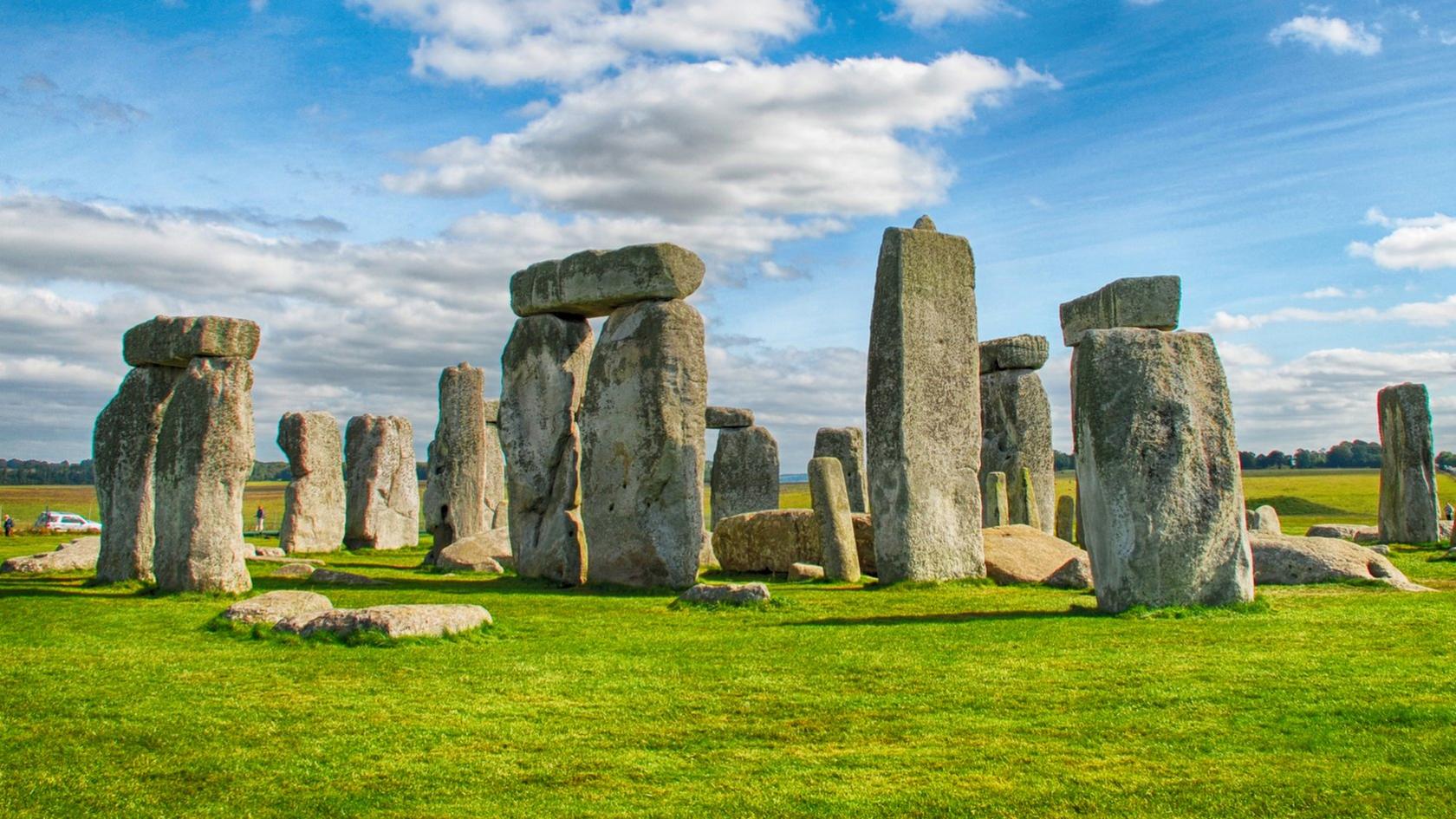
- Published6 January 2017
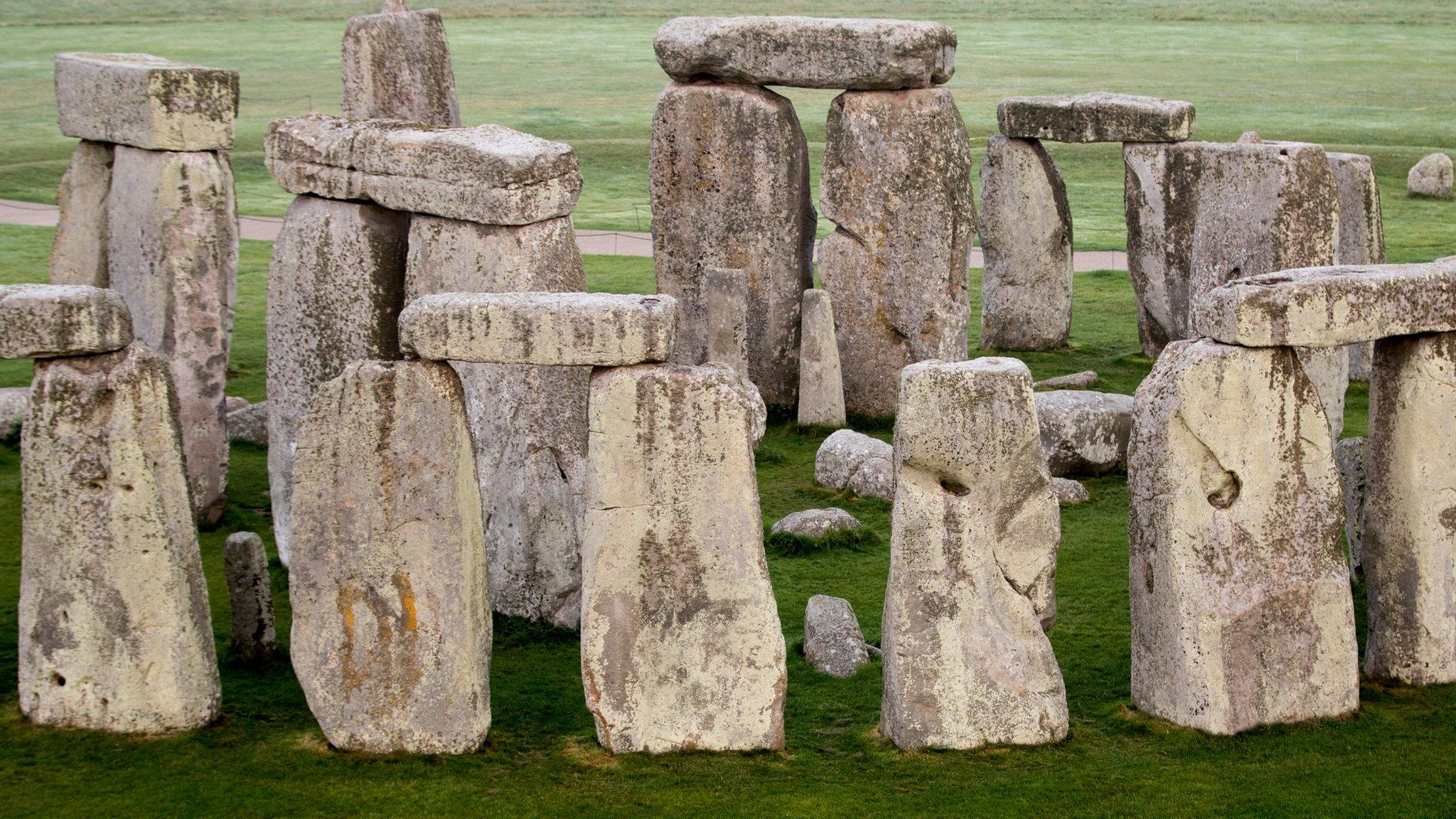
- Published7 September 2015
